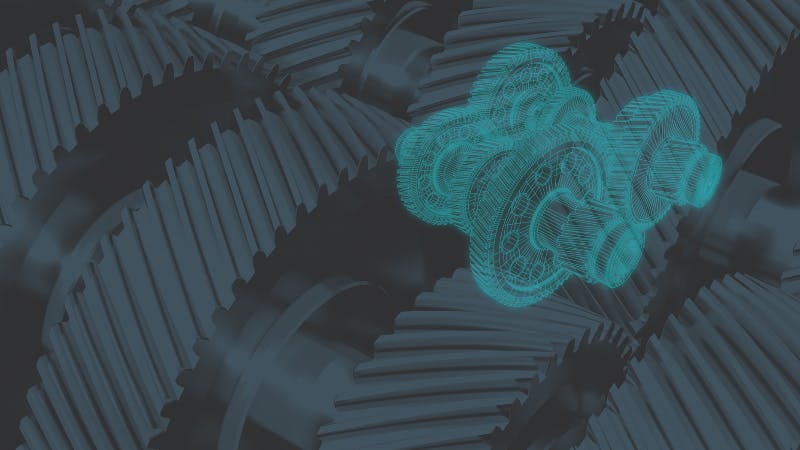Improving the performance of smart machines requires multidisciplinary collaboration and simulation across a wide range of physics and disciplines under one umbrella. This gives you the ability to capture not only all the complexities of different types of physics but also enables multi-physics simulations around domains, including mechanical, electrical, and electronic systems.
NVH Analysis Software
Various requirements with respect to vibration levels and noise radiation are strongly associated with machine performance and workplace safety. The key to understanding the vibrations in industrial machinery is identifying their origin, which is linked to the gear vibrations in the system.
Modeling gear transmissions is laborious and cumbersome: the transmission system consists of various components such as gears, shafts, and bearings. Capturing all relevant effects (misalignment, gear microgeometry, housing flexibility) adds additional complexity for multi-body analysts.
Predict and Reduce Gear Vibrations in Rotating Machinery
As industrial equipment becomes more complex, leading industrial OEMs are finding ways to build more effective and trustworthy simulations. This can be especially helpful when modeling gear transmissions which can be laborious and cumbersome: the transmission system consists of various components such as gears, shafts, and bearings. Capturing all relevant effects (misalignment, gear microgeometry, housing flexibility) adds additional complexity for a multi-body analyst.
3D Multi-Body Simulation Approach Benefits
During this webinar, we will demonstrate an end-to-end solution designed for motion multi-body expert analysts as well as designers, to address gear transmission NVH.
You will learn:
- How to create gear transmission models automatically from industry-specific parameters (tooth numbers, normal modules, and more).
- Gain a deeper understanding of variables that affects transmission error variations e.g. microgeometry modifications.
- How to reduce transmission vibration and associated noise using 3D multi-body simulation.
